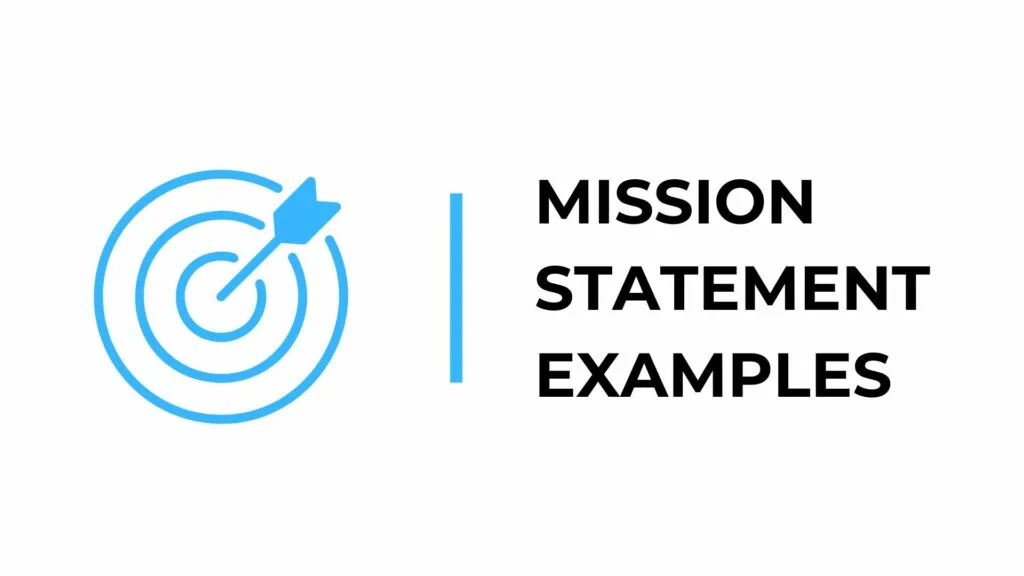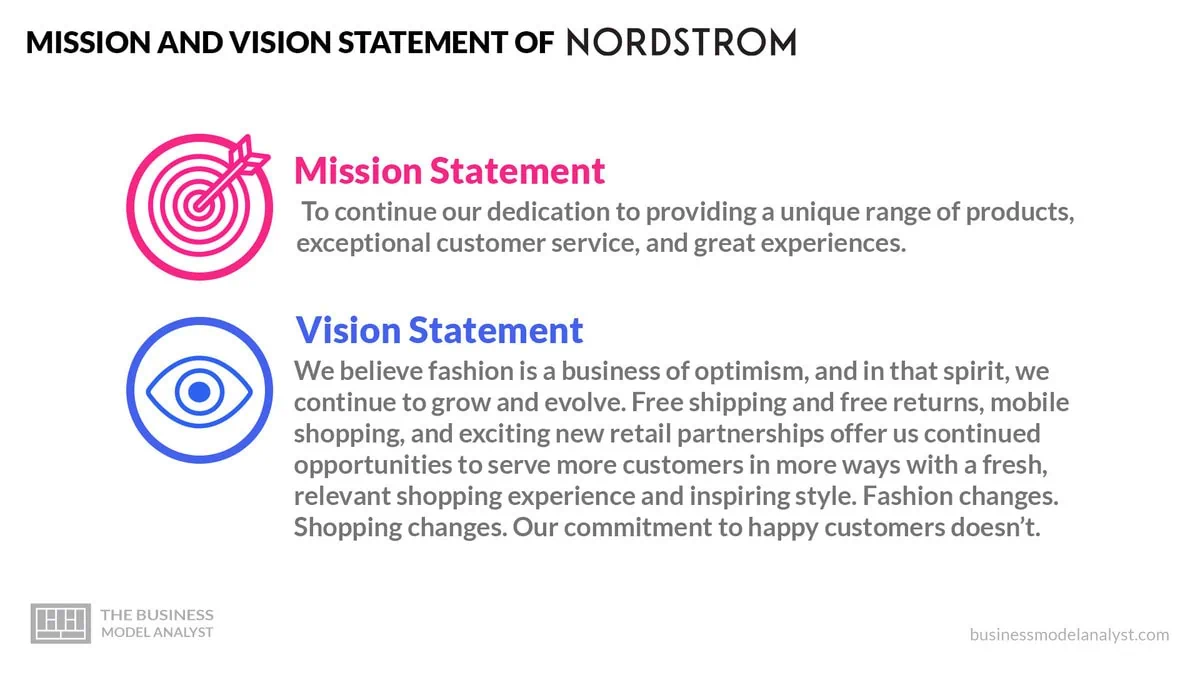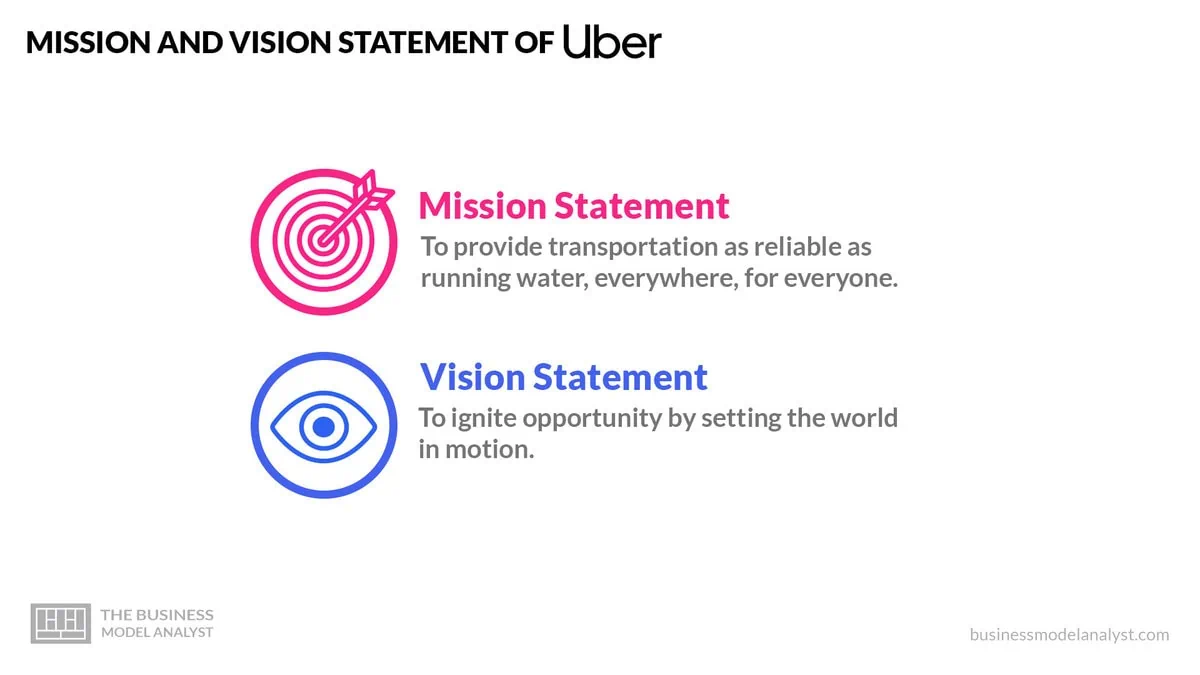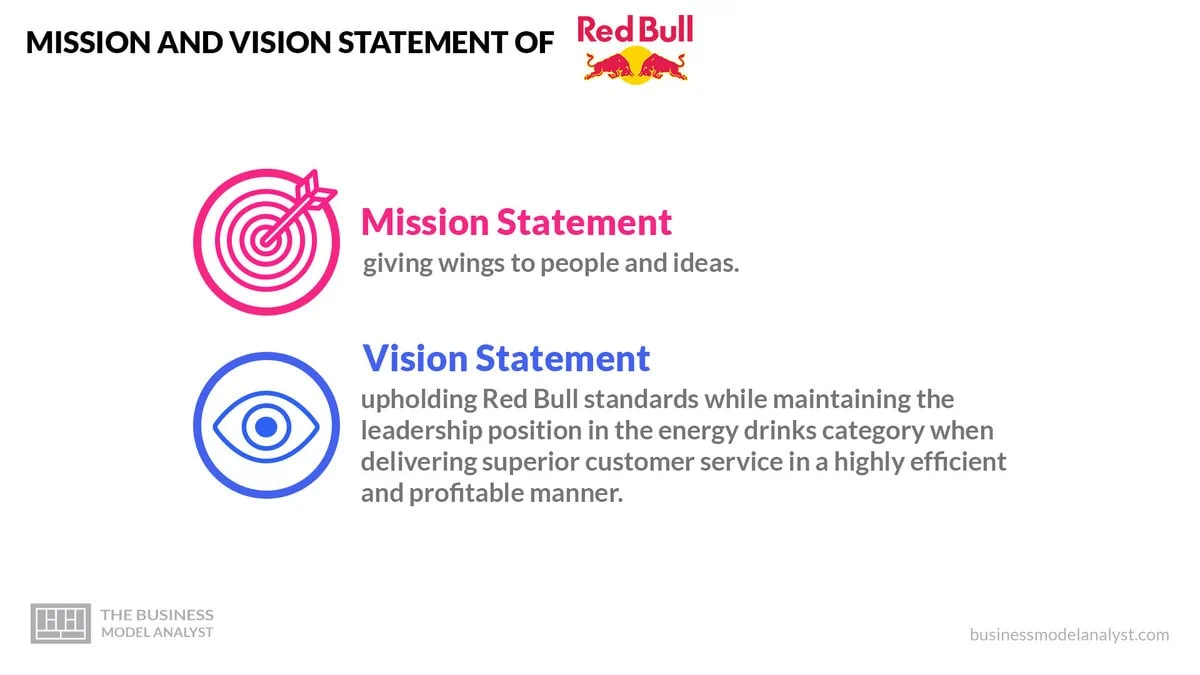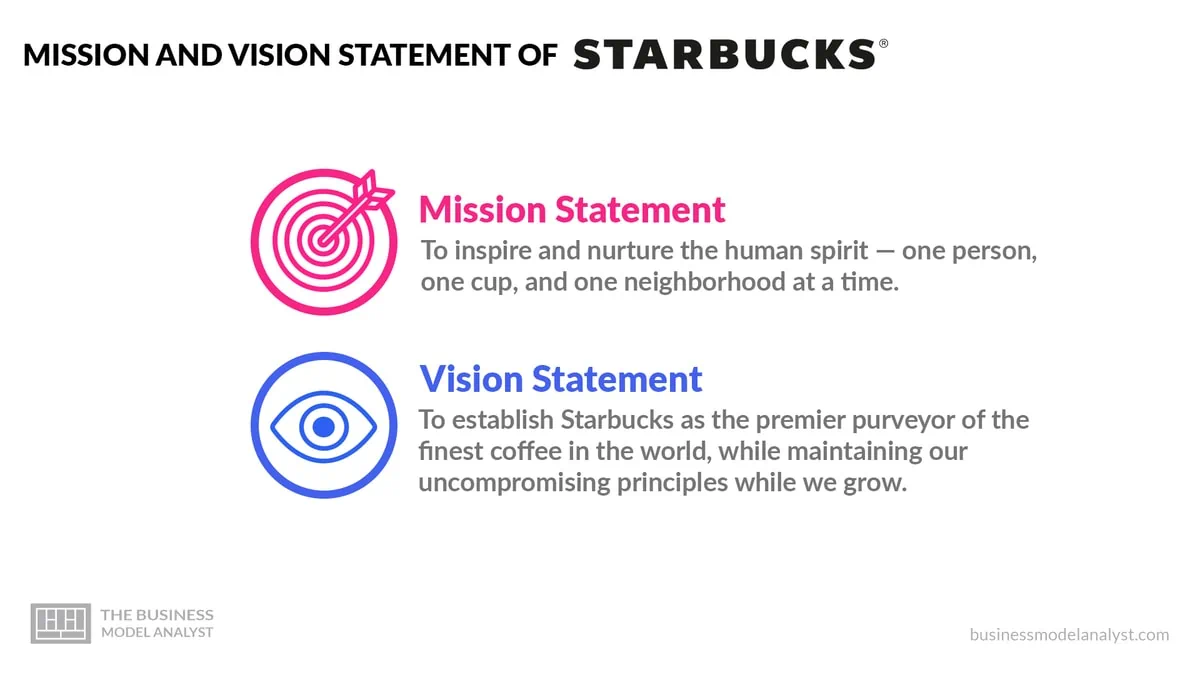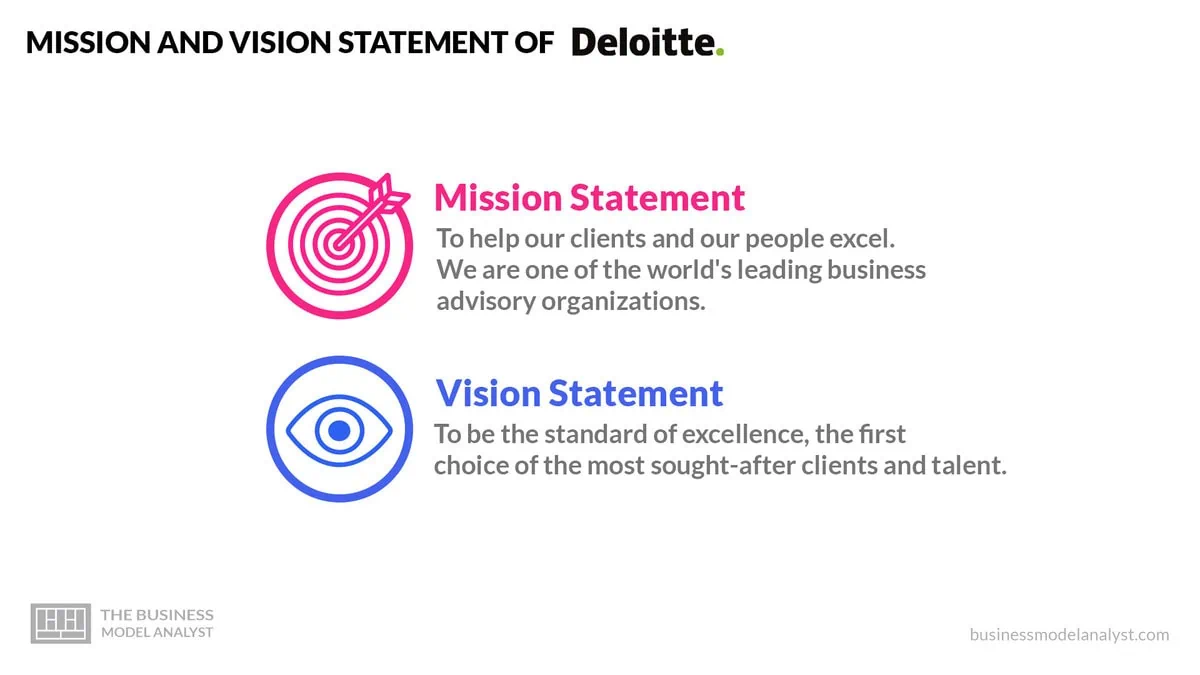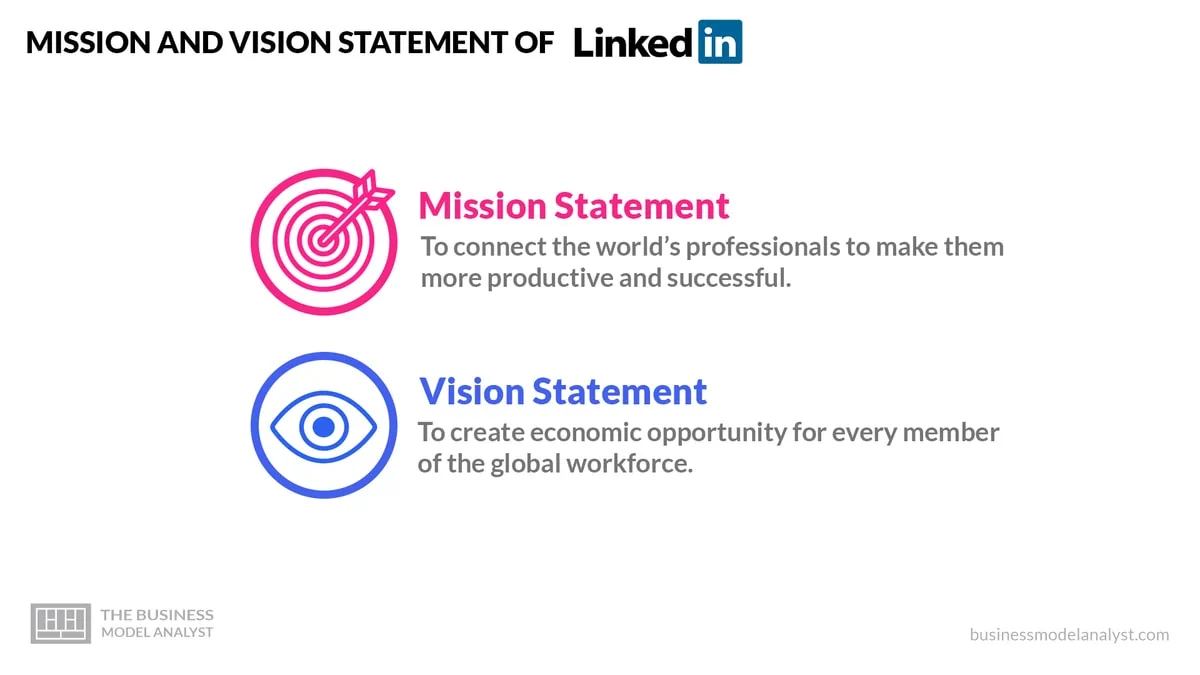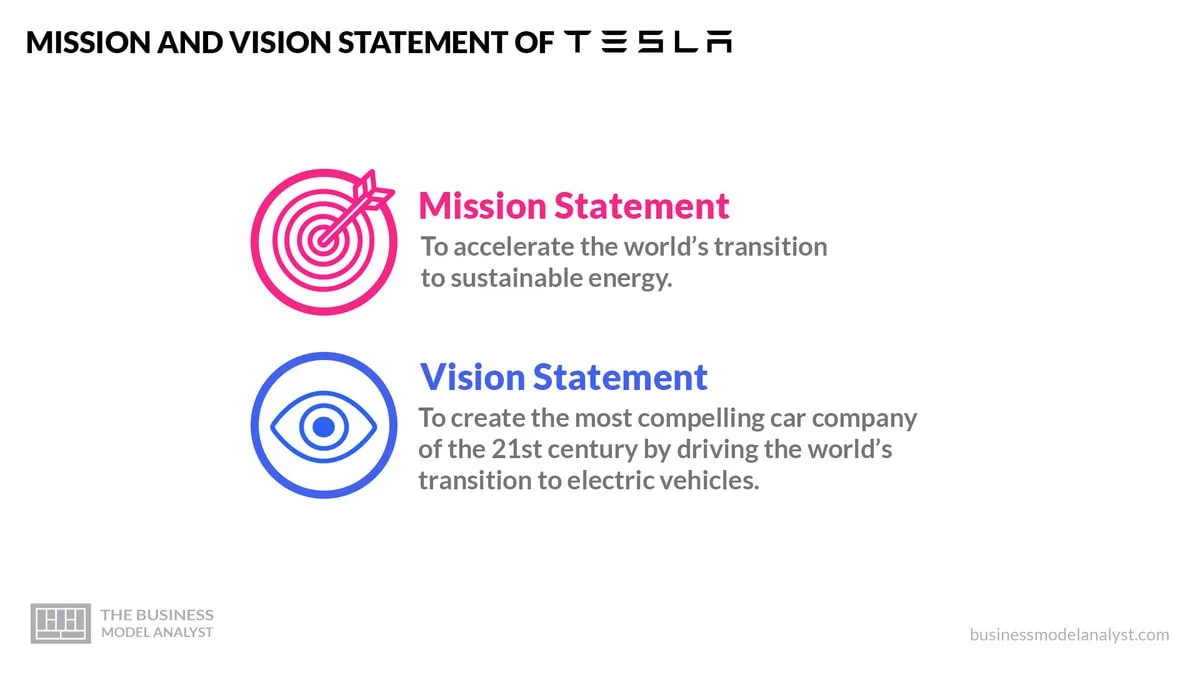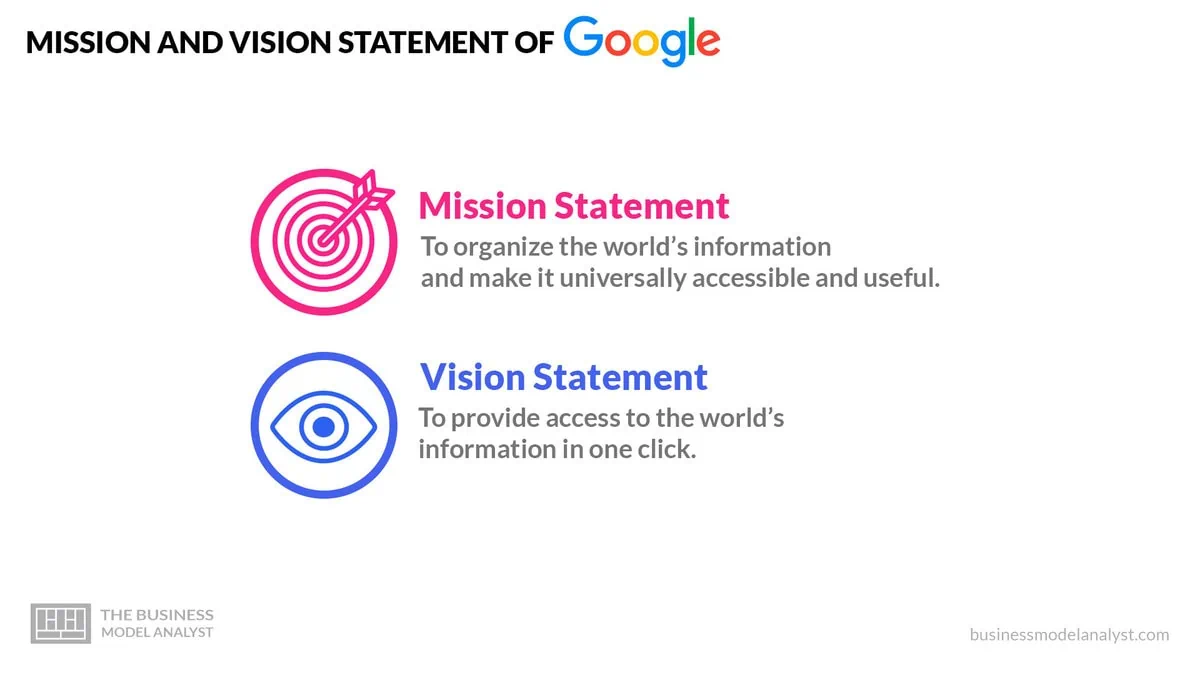48 Mission Statement Examples
A mission statement is a powerful tool for defining an organization’s core purpose, values, and objectives. It communicates why a business exists and what it aims to achieve, serving as a guiding star for decision-making and strategic planning.
In this article, we will explore mission statements from some of the world’s largest companies, providing insights into how they convey their goals and values. Additionally, we will discuss the differences between mission, vision, and value statements, and provide guidance on how to craft an effective mission statement for your organization.
Contents
What Is a Mission Statement?
A mission statement is a concise declaration that outlines the goals, values, and purpose of an organization. It explains why the company exists and what it aims to achieve, serving as a guiding star for decision-making and strategic planning.
A well-crafted mission statement helps align employees, customers, and stakeholders with the company’s primary objectives and priorities.
Over time, as the organization grows and evolves, its mission statement may be updated to reflect new goals and a changing vision.
Mission Statement Examples
Let’s check some mission statement examples from the largest companies in the world.
1. Amazon
“To be Earth’s most customer-centric company, where customers can find and discover anything they might want to buy online, and endeavors to offer its customers the lowest possible prices.”
Amazon’s mission statement highlights its dedication to providing an unparalleled customer experience by offering a vast selection of products at competitive prices. This focus on customer satisfaction and convenience has helped Amazon become a global leader in e-commerce. The company’s commitment to innovation and efficiency in logistics and technology continues to revolutionize the way people shop online, solidifying its position as a go-to destination for consumers worldwide.
2. Apple
“To bring the best user experience to its customers through its innovative hardware, software, and services.”
Apple’s mission statement emphasizes its commitment to delivering exceptional user experiences through its cutting-edge products and services. Renowned for its innovative approach, Apple consistently pushes the boundaries of technology, creating devices and software that are not only powerful but also intuitive and aesthetically pleasing. This dedication to excellence and innovation has made Apple a leading brand in the technology industry, with a loyal customer base and a reputation for quality and reliability.
3. Nike
“To bring inspiration and innovation to every athlete in the world. (If you have a body, you are an athlete.)”
Nike’s mission statement reflects its dedication to empowering individuals through sports and fitness. By emphasizing both inspiration and innovation, Nike aims to push the limits of athletic performance with cutting-edge products designed for athletes of all levels. The company’s inclusive definition of an athlete underscores its commitment to making sports accessible to everyone, promoting a healthy and active lifestyle. Nike’s strong brand identity and continuous innovation have made it a global leader in the athletic footwear and apparel industry.
4. McDonald’s
“To be our customers’ favorite place and way to eat and drink.”
McDonald’s mission statement underscores its focus on customer satisfaction by aiming to be the preferred choice for dining. Known for its consistency and quality, McDonald’s offers a familiar and convenient experience to customers around the globe. By continuously evolving its menu and services to meet changing tastes and preferences, McDonald’s strives to maintain its position as a leader in the fast-food industry. The company’s commitment to affordability, speed, and customer service helps ensure it remains a favorite dining option for millions of people every day.
5. IKEA
“To create a better everyday life for the many people.”
IKEA’s mission statement highlights its goal of improving the quality of everyday living through affordable and well-designed home furnishings. By offering a wide range of functional and stylish products at accessible prices, IKEA strives to make good design available to everyone. The company’s commitment to sustainability and innovation in product development and operations further reinforces its mission. IKEA’s unique shopping experience, from its sprawling stores to its convenient flat-pack furniture, has made it a beloved brand for consumers seeking both value and style in home décor.
6. Costco
“To continually provide our members with quality goods and services at the lowest possible prices.”
Costco’s mission focuses on offering exceptional value through high-quality products and competitive prices. This member-centric approach, combined with bulk purchasing, ensures significant savings and customer satisfaction, driving loyalty and trust.
7. Walmart
“To save people money so they can live better.”
Walmart’s mission statement emphasizes its commitment to helping customers save money and improve their quality of life. By offering a wide range of products at low prices, Walmart aims to make everyday essentials more affordable and accessible to everyone.
8. Google
“To organize the world’s information and make it universally accessible and useful.”
Google’s mission statement highlights its dedication to organizing vast amounts of information and making it easily accessible to everyone. Through innovative technology and continuous improvement, Google strives to provide valuable and relevant information to users worldwide.
9. Red Bull
“To give wings to people and ideas.”
Red Bull’s mission statement focuses on energizing individuals and inspiring creativity. By promoting an active lifestyle and supporting a wide range of sports, cultural events, and innovative projects, Red Bull aims to empower people and foster dynamic ideas.
10. Lululemon
“To elevate the world from mediocrity to greatness.”
Lululemon’s mission statement emphasizes its commitment to promoting wellness and personal growth. By offering high-quality athletic apparel and fostering a community centered around healthy living, Lululemon aims to inspire individuals to reach their full potential.
11. Tesla
“To accelerate the world’s transition to sustainable energy.”
Tesla’s mission statement highlights its commitment to advancing sustainable energy solutions. By producing innovative electric vehicles and renewable energy products, Tesla aims to reduce reliance on fossil fuels and promote a more sustainable future.
12. Starbucks
“To inspire and nurture the human spirit – one person, one cup, and one neighborhood at a time.”
Starbucks’ mission statement emphasizes its dedication to creating a welcoming and inclusive environment. By focusing on quality coffee and community engagement, Starbucks aims to foster connections and enrich the lives of its customers.
13. Boeing
“To protect, connect, and explore our world and beyond.”
Boeing’s mission statement underscores its commitment to innovation in aerospace and defense. By developing cutting-edge technologies and solutions, Boeing aims to enhance global connectivity, security, and exploration.
14. Ford
“To help build a better world, where every person is free to move and pursue their dreams.”
Ford’s mission statement focuses on creating innovative mobility solutions that improve people’s lives. By producing reliable and advanced vehicles, Ford aims to empower individuals and contribute to a better, more connected world.
15. Airbnb
“To create a world where anyone can belong anywhere.”
Airbnb’s mission statement emphasizes its commitment to fostering a sense of belonging and community. By providing unique and diverse lodging options, Airbnb aims to offer travelers authentic and memorable experiences, making the world feel more connected.
16. Spotify
“To unlock the potential of human creativity—by giving a million creative artists the opportunity to live off their art and billions of fans the opportunity to enjoy and be inspired by it.”
Spotify’s mission statement emphasizes its dedication to empowering artists and enriching the lives of listeners. By providing a platform for artists to share their music and for fans to discover and enjoy it, Spotify aims to foster creativity and connect people through the power of music.
17. Deloitte
“To make an impact that matters by creating trust and confidence in a more equitable society.”
Deloitte’s mission statement highlights its commitment to making a positive impact through its professional services. By fostering trust, integrity, and equity, Deloitte aims to help clients navigate challenges and contribute to a better society.
18. Target
“To help all families discover the joy of everyday life.”
Target’s mission statement emphasizes its commitment to providing a joyful and convenient shopping experience for families. By offering a wide range of quality products at affordable prices, Target aims to make everyday life more enjoyable and accessible for everyone.
19. PepsiCo
“To create more smiles with every sip and every bite.”
PepsiCo’s mission statement highlights its focus on delighting consumers through its diverse portfolio of beverages and snacks. By prioritizing taste, quality, and innovation, PepsiCo aims to bring joy and satisfaction to people around the world with every product they offer.
20. Adidas
“To be the best sports company in the world.”
Adidas’ mission statement emphasizes its commitment to excellence in the sports industry. By continuously innovating and creating high-performance products, Adidas aims to empower athletes and inspire people to achieve their best in sports and life.
21. Chick-Fil-A
“To glorify God by being a faithful steward of all that is entrusted to us and to have a positive influence on all who come in contact with Chick-fil-A.”
Chick-fil-A’s mission statement emphasizes its commitment to stewardship and positive influence. By focusing on quality food, exceptional customer service, and community involvement, Chick-fil-A aims to create a welcoming and uplifting experience for its customers.
22. Netflix
“To entertain the world.”
Netflix’s mission statement highlights its dedication to providing entertainment to a global audience. By offering a diverse range of content, including movies, series, and documentaries, Netflix aims to bring joy and engagement to viewers everywhere, becoming a leading platform for streaming entertainment.
23. Samsung
“Inspire the world, create the future.”
Samsung’s mission statement underscores its commitment to innovation and inspiration. By developing cutting-edge technology and products, Samsung aims to shape the future and enhance the lives of people around the world, driving progress in various industries.
24. Nordstrom
“To provide outstanding service every day, one customer at a time.”
Nordstrom’s mission statement emphasizes its commitment to delivering exceptional customer service. By focusing on personalized experiences and high-quality products, Nordstrom aims to create a memorable and enjoyable shopping experience for each customer.
25. SpaceX
“To make life multiplanetary.”
SpaceX’s mission statement highlights its ambitious goal of enabling human life on other planets. By developing innovative space technologies and reducing the cost of space travel, SpaceX aims to expand humanity’s presence beyond Earth, paving the way for a future where humans can thrive on multiple planets.
26. Marriott
“To enhance the lives of our customers by creating and enabling unsurpassed vacation and leisure experiences.”
Marriott’s mission statement emphasizes its commitment to providing exceptional vacation and leisure experiences. By focusing on quality, customer service, and innovative hospitality solutions, Marriott aims to create memorable stays and foster loyalty among its guests.
27. Uber
“We ignite opportunity by setting the world in motion.”
Uber’s mission statement emphasizes its commitment to creating opportunities through mobility. By providing convenient and reliable transportation solutions, Uber aims to connect people and places, making it easier for individuals to access work, services, and experiences.
28. Slack
“Make work life simpler, more pleasant, and more productive.”
Slack’s mission statement emphasizes its dedication to improving workplace communication and collaboration. By providing a user-friendly and efficient platform, Slack aims to enhance productivity and create a more enjoyable work environment for teams and organizations.
29. Southwest Airlines
“To connect people to what’s important in their lives through friendly, reliable, and low-cost air travel.”
Southwest Airlines’ mission statement emphasizes its commitment to providing affordable and dependable flights while delivering exceptional customer service. By focusing on making air travel accessible and enjoyable, Southwest Airlines aims to create meaningful connections for its passengers.
30. Chipotle
“To cultivate a better world by serving responsibly sourced, classically-cooked, real food with wholesome ingredients without artificial colors, flavors, or preservatives.”
Chipotle’s mission statement highlights its dedication to sustainability and quality. By focusing on ethically sourced ingredients and traditional cooking methods, Chipotle aims to provide nutritious and delicious meals while promoting environmental and social responsibility.
31. Pfizer
“Breakthroughs that change patients’ lives.”
Pfizer’s mission statement emphasizes its commitment to innovation in healthcare. By developing cutting-edge medications and therapies, Pfizer aims to improve health outcomes and enhance the quality of life for patients around the world.
32. USAA
“To facilitate the financial security of its members, associates, and their families by providing a full range of highly competitive financial products and services; in doing so, USAA seeks to be the provider of choice for the military community.”
USAA’s mission statement highlights its commitment to serving military members and their families by offering comprehensive and competitive financial services. By focusing on financial security and customer service, USAA aims to be the preferred financial partner for the military community.
33. Whole Foods
“To nourish people and the planet.”
Whole Foods Market’s mission statement emphasizes its commitment to promoting health and sustainability. By offering high-quality, natural, and organic products, Whole Foods aims to support the well-being of its customers and the environment.
34. IBM
“To lead in the creation, development, and manufacture of the industry’s most advanced information technologies.”
IBM’s mission statement emphasizes its focus on innovation and leadership in the technology sector. By developing cutting-edge solutions and services, IBM aims to drive progress and help businesses harness the power of advanced information technologies.
35. Linkedin
“To connect the world’s professionals to make them more productive and successful.”
LinkedIn’s mission statement emphasizes its commitment to fostering professional connections and career growth. By providing a platform for networking, job searching, and knowledge sharing, LinkedIn aims to empower professionals to achieve their career goals and enhance their productivity.
36. Johnson & Johnson
“To profoundly change the trajectory of health for humanity.”
Johnson & Johnson’s mission statement highlights its dedication to advancing global health. By developing innovative healthcare products and solutions, Johnson & Johnson aims to improve health outcomes and enhance the well-being of people around the world.
37. American Express
“To provide the world’s best customer experience every day.”
American Express’s mission statement emphasizes its commitment to delivering exceptional customer service. By offering reliable and innovative financial products and services, American Express aims to enhance the lives of its customers and build long-lasting relationships.
38. Etsy
“To keep commerce human.”
Etsy’s mission statement emphasizes its commitment to supporting small businesses and fostering personal connections through commerce. By providing a platform for unique and handmade products, Etsy aims to create a vibrant marketplace that values creativity and community.
39. Audiochuck
“To deliver high-quality, compelling audio content that keeps listeners engaged and entertained.”
Audiochuck’s mission statement emphasizes its dedication to producing captivating and well-crafted podcasts. By focusing on storytelling and audio quality, Audiochuck aims to create immersive listening experiences that resonate with audiences.
40. Life is Good
“To spread the power of optimism.”
Life is Good’s mission statement highlights its commitment to promoting positivity and resilience. By creating uplifting products and supporting charitable initiatives, Life is Good aims to inspire people to embrace a hopeful outlook and make a positive impact on the world.
41. LEGO
“To inspire and develop the builders of tomorrow.”
LEGO’s mission statement emphasizes its commitment to fostering creativity and learning through play. By providing innovative and engaging building experiences, LEGO aims to inspire children and adults alike to explore their imaginations and develop essential skills.
42. Dunkin’ Donuts
“To make and serve the freshest, most delicious coffee and donuts quickly and courteously in modern, well-merchandised stores.”
Dunkin’ Donuts’ mission statement emphasizes its commitment to providing high-quality coffee and donuts with excellent customer service. By focusing on freshness, speed, and a pleasant store environment, Dunkin’ Donuts aims to offer a satisfying and convenient experience for its customers.
43. Norwegian Cruise Line
“To provide the highest quality cruise product, ensuring that our passengers experience the vacation of a lifetime.”
Norwegian Cruise Line’s mission statement emphasizes its commitment to offering exceptional cruise experiences. By focusing on quality, innovation, and customer satisfaction, Norwegian Cruise Line aims to create unforgettable vacations for its passengers.
44. No Kid Hungry
“To end childhood hunger in America by ensuring all children get the healthy food they need every day to thrive.”
No Kid Hungry’s mission statement highlights its dedication to eliminating childhood hunger. By providing access to nutritious meals and raising awareness, No Kid Hungry aims to ensure that every child in America has the food they need to grow and succeed.
45. The Hartford
“To protect and support the aspirations of our customers by delivering tailored insurance solutions with exceptional service.”
The Hartford’s mission statement emphasizes its commitment to providing customized insurance products and outstanding customer service. By focusing on protection and support, The Hartford aims to help individuals and businesses achieve their goals with confidence.
46. Warby Parker
“To offer designer eyewear at a revolutionary price, while leading the way for socially conscious businesses.”
Warby Parker’s mission statement highlights its commitment to providing stylish, affordable eyewear and promoting social responsibility. By combining innovative business practices with a focus on social good, Warby Parker aims to make a positive impact on both customers and the community.
47. Honda
“To maintain a global viewpoint, with the dedication to supply products of the highest quality, yet at a reasonable price for worldwide customer satisfaction.”
Honda’s mission statement emphasizes its commitment to providing high-quality products at affordable prices. By focusing on innovation and customer satisfaction, Honda aims to meet the diverse needs of its global customer base and maintain its reputation for excellence.
48. LG Electronics
“To create a better life through innovation and technology.”
LG Electronics’ mission statement emphasizes its commitment to improving lives with innovative products and advanced technology. By focusing on quality and customer satisfaction, LG aims to enhance the everyday experiences of consumers around the world.
How Do You Write a Mission Statement?
An effective mission statement is succinct, clear, and actionable. It encapsulates the essence of your organization’s purpose and guides strategic decisions. Here’s how to structure a compelling mission statement:
Step 1: Start with a Label
Begin with a simple label, such as “Our mission is…” This helps to clearly define the statement’s purpose and sets the stage for what follows.
Step 2: Use a Present Tense Verb
Incorporate a strong verb in the present tense. This conveys action and immediacy, emphasizing what the organization actively does. Examples include “provide,” “create,” “inspire,” and “deliver.”
Step 3: Identify Your Audience
Specify who benefits from your mission. This could be customers, employees, communities, or other stakeholders. Identifying the audience ensures the statement is relevant and focused.
Step 4: State the Result or Benefit
Describe the key outcome or benefit of your organization’s efforts. This highlights the value you provide and the impact of your work. It should answer the question, “What is the end result of our efforts?”
Step 5: Explain How You Achieve It
Conclude with a brief explanation of how your organization achieves its mission. This provides context and insight into the methods or principles guiding your work. It should reflect your core values and unique approach.
Final Step: Putting It All Together
By following this structure, you can create a mission statement that clearly communicates your organization’s purpose and values. This structured approach ensures your mission statement is not only informative but also inspiring and memorable.
An effective mission statement should be timeless, guiding your organization now and in the future. Keep it concise, actionable, and aligned with your core values to ensure it resonates with all stakeholders.
The Structure of an Effective Mission Statement
An effective mission statement is succinct, clear, and actionable. It encapsulates the essence of your organization’s purpose and guides strategic decisions. Here’s how to structure a compelling mission statement:
Start with a simple label, such as “Our mission is…” This helps to clearly define the statement’s purpose and sets the stage for what follows. Use a strong verb in the present tense, conveying action and immediacy, such as “provide,” “create,” “inspire,” or “deliver.”
Identify who benefits from your mission, such as customers, employees, communities, or other stakeholders. Specifying the audience ensures the statement is relevant and focused. Describe the key outcome or benefit of your organization’s efforts, highlighting the value you provide and the impact of your work. This should answer the question, “What is the end result of our efforts?”
Conclude with a brief explanation of how your organization achieves its mission, reflecting your core values and unique approach. This provides context and insight into the methods or principles guiding your work.
Example Mission Statement Structure
To illustrate, let’s break down an example mission statement:
“Our mission is to make our clients successful by merging remarkable digital design and goal-focused usability.”
- Label: “Our mission is”
- Verb: “to make”
- Audience: “our clients”
- Result: “successful”
- How: “by merging remarkable digital design and goal-focused usability”
By following this structure, you can create a mission statement that clearly communicates your organization’s purpose and values. This structured approach ensures your mission statement is not only informative but also inspiring and memorable.
An effective mission statement should be timeless, guiding your organization now and in the future. Keep it concise, actionable, and aligned with your core values to ensure it resonates with all stakeholders.
Mission Statement Vs. Vision Statement Vs. Values Statement
When it comes to defining an organization’s identity and guiding its strategic direction, mission, vision, and value statements are key components. While they might seem similar, each statement serves a unique purpose in outlining what the company stands for, where it aims to go, and the principles it upholds.
Mission Statement
A mission statement defines the organization’s purpose and primary objectives. It answers the question, “Why do we exist?” and provides a clear description of the company’s core goals and the value it aims to deliver to its customers and stakeholders. The mission statement is often action-oriented, focusing on what the organization does and how it intends to achieve its goals.
Vision Statement
A vision statement outlines the organization’s long-term aspirations and desired future state. It answers the question, “Where do we want to go?” and serves as a source of inspiration and motivation for employees and stakeholders. The vision statement is forward-looking and describes what the organization hopes to achieve in the future, often in a more abstract and idealistic manner than the mission statement.
Value Statement
A value statement articulates the core principles and beliefs that guide the organization’s actions and decision-making processes. It answers the question, “What do we stand for?” and provides a framework for ethical behavior and organizational culture. The value statement reflects the organization’s commitment to certain standards and helps to shape its identity and reputation.
In summary, while the mission statement focuses on the present and the company’s primary objectives, the vision statement looks to the future and outlines the company’s long-term goals. The value statement, on the other hand, defines the fundamental principles that guide the organization’s behavior and decision-making. Together, these statements provide a comprehensive understanding of the organization’s purpose, aspirations, and ethical framework.
Conclusion
Mission statements are crucial for articulating an organization’s core purpose and guiding its strategic direction. They help align employees, customers, and stakeholders with the company’s goals and values, ensuring everyone works towards a common objective.
By understanding the structure and key elements of a mission statement, you can craft a compelling and effective declaration that resonates with your audience and drives your organization forward.
Remember, a well-crafted mission statement is not only informative but also inspiring, providing a clear path to achieving your company’s vision and upholding its values.


